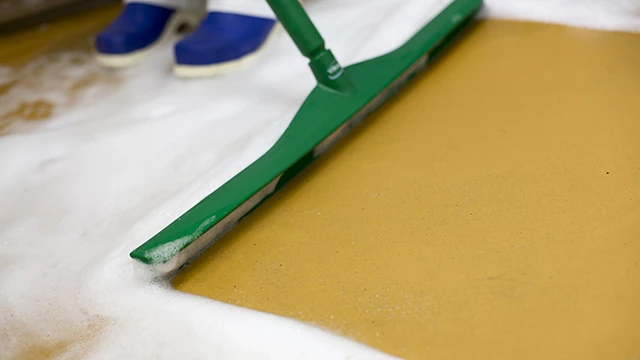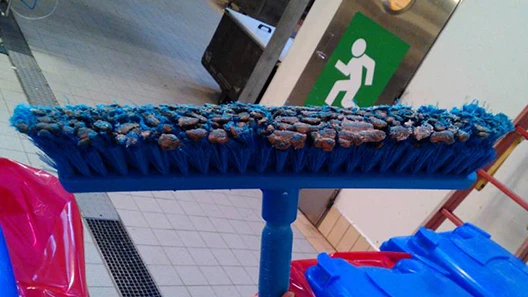Foreign body contamination in food products can be a serious issue, affecting both safety and quality. Regardless of the cause, such incidents can lead to significant financial losses and reputational damage for food businesses. To address this challenge, Vikan developed UST brushware. This blog post explores how Vikan tested and validated its innovative UST technology by analyzing bristle fixation strength across different types of food industry brushes. It also explains how these findings have been applied and highlights how UST technology reduces the risk of bristle loss. We measured the force needed to pull a bristle from various types of food industry brushes, including: The results showed that the force required to remove a bristle from the first two types of brushes varied depending on factors like bristle thickness, position within the bundle, and whether it was the first or subsequent bristle pulled. For example, the first bristle is usually tightly held by the staple, requiring more force to remove. Once one bristle is removed, the remaining ones become looser, reducing the force needed and increasing the chance of further bristle loss. UST brushware uses a unique construction method that eliminates the need for staples or resin to hold the bristles in place. Every bristle is individually fixed during the molding process, ensuring consistent and strong fixation throughout the brush. This design significantly reduces bristle loss and minimizes the risk of foreign body contamination. Bristle thickness still plays a role in determining when a bristle breaks. Thinner bristles require less force to break, regardless of the brush type. We measured the average force needed to pull bristles from a UST brush and a standard D&S brush. Based on 60 pulls per brush, the average fixation strength for the UST brush was 5.34 N, compared to 3.53 N for the standard D&S brush. This means it takes about 52% more force to dislodge a UST bristle than a standard one. Calculating the percentage difference: So, on average, it takes 52% more force to remove a UST bristle than a standard one. We also analyzed the variability in fixation strength using Standard Deviation. For the UST brush, the average was 5.34 N with a Standard Deviation of 0.57 N. For the D&S brush, the average was 3.53 N with a Standard Deviation of 1.18 N. Using these values, we calculated the Percentage Variance: This shows that UST provides over three times better consistency in bristle fixation compared to standard brushes. If you want to learn more about how UST brushware can help protect your business, visit our website at Vikan's UST page. Finding the right Vikan squeegee for the right job helps raise hygiene standards and improves employee satisfaction. Understand the nine essential items that must be included in a Declaration of Compliance (DoC). Discover Vikan’s tips for preventing this common problem. Premium Charcoal Grill,Authentic BBQ Charcoal,Outdoor Charcoal Grill GFTOP , https://www.ovenchief.com

Background InformationOur Investigations



Determination of Average Bristle Fixation Strength
Determination of Bristle Fixation Variability
Summary
Recent Blog Posts

Which squeegee do I choose?

What should you look for in a Declaration of Compliance?

Do your brushes clog?
Understanding bristle fixation in food industry brushware
See all posts
Lotte Jensen - Marketing Project Manager
Stine Lønnerup Bislev - Previous Hygiene and Compliance Manager at Vikan
Lotte Jensen - Marketing Project Manager

